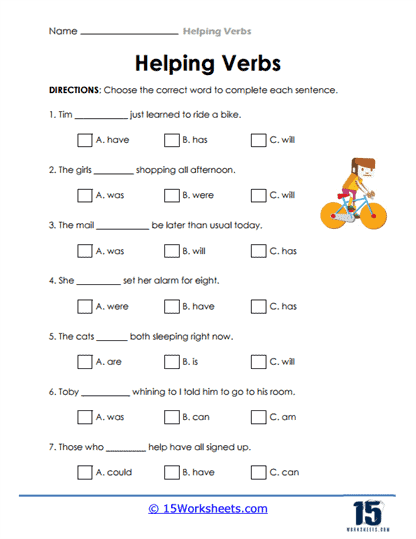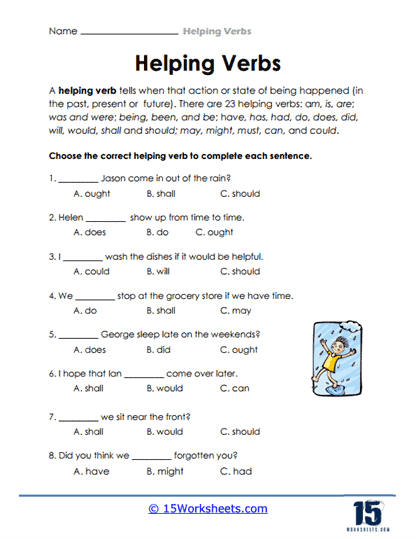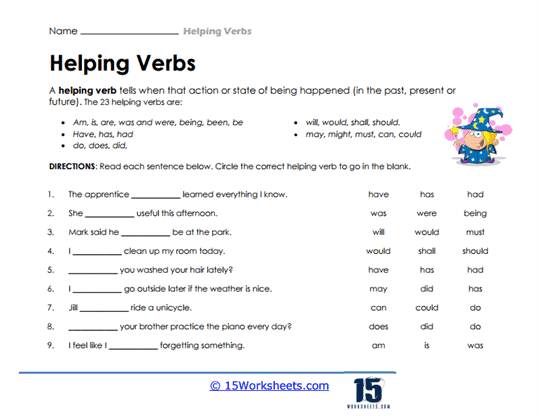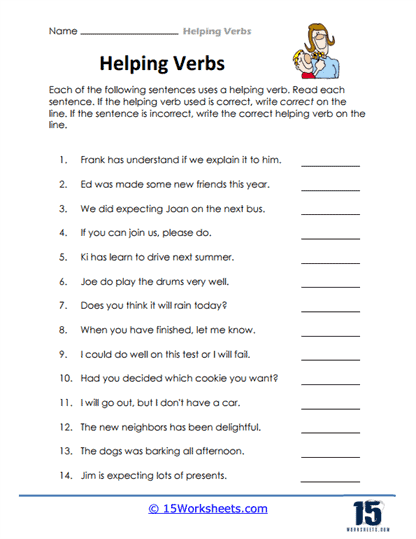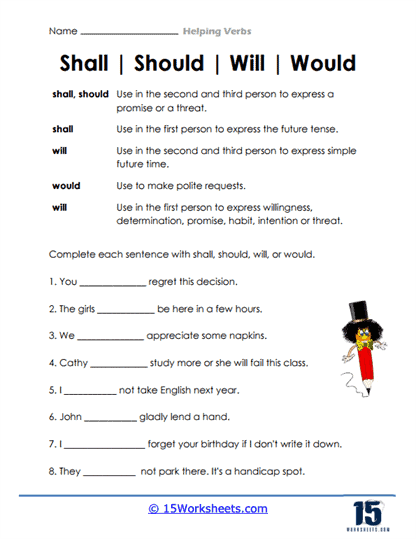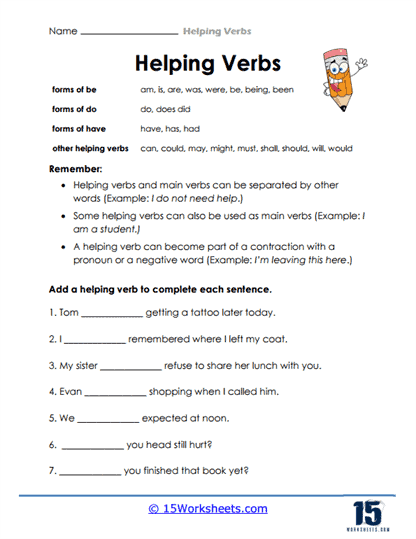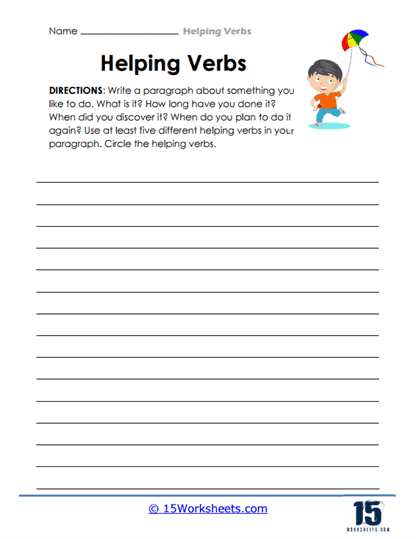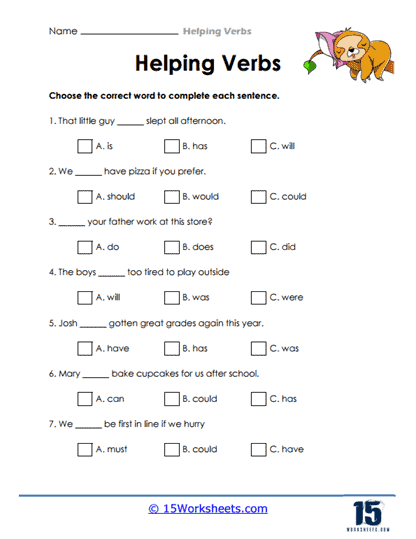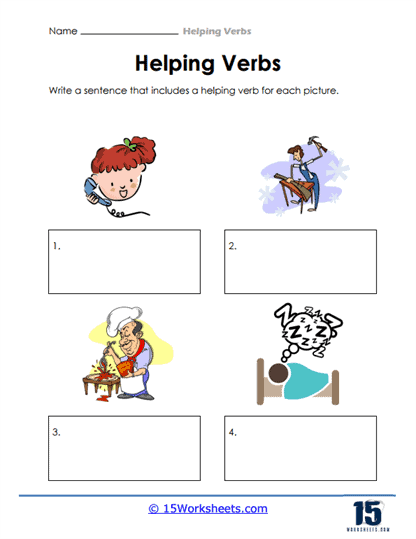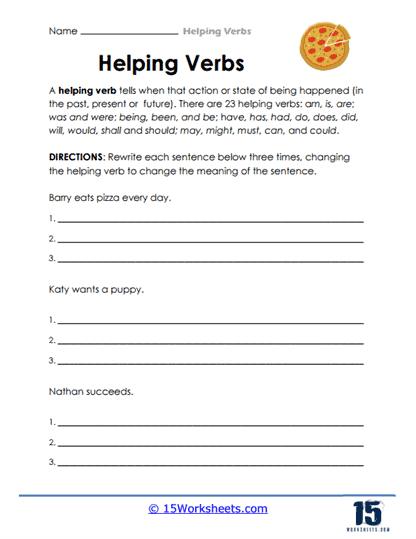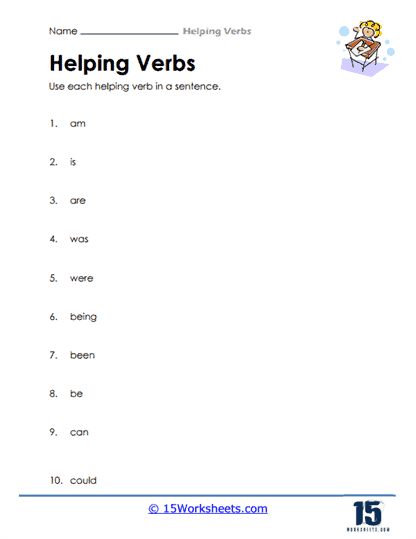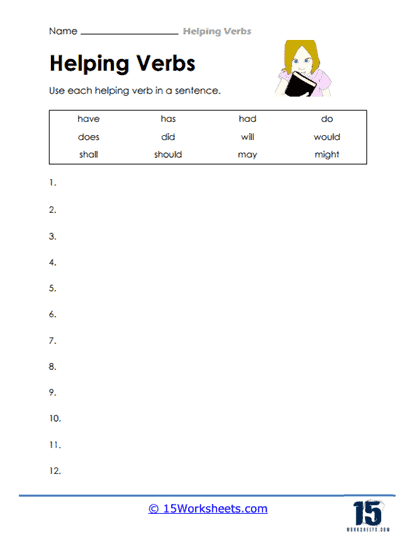Helping Verbs Worksheets
All About These 15 Worksheets
Helping verbs, also known as auxiliary verbs, are verbs that work together with main verbs to form different tenses, moods, and voices in English. These Helping Verbs worksheets for students include a variety of exercises to help them learn how to identify and use different helping verbs in different contexts. These exercises may include filling in the blanks with the correct helping verb, rewriting sentences to correct errors in usage, and writing activities that encourage the usage of helping verbs in sentences. Through these worksheets, students will:
- Understand the function of helping verbs in sentences and how its various forms can change the meaning conveyed;
- Complete sentences by supplying the correct helping verbs;
- Spot errors in usage of helping verbs in sentences and be able to correct them;
- Know when to use shall, should, will, and would;
- And write their own sentences or a paragraph responding to a prompt while using helping verbs in sentences correctly.
In summary, these worksheets on helping verbs can be a helpful tool for students to improve their grammar skills and communicate more effectively in English.
What are Helping Verbs and why do they matter?
Helping verbs, also known as auxiliary verbs, are verbs that work together with main verbs to form different tenses, moods, and voices in English. They are called “helping” or “auxiliary” because they help to indicate the tense, mood, voice, or other grammatical features of a sentence. Here are some examples of helping verbs and how to use them correctly in sentences:
- To indicate tense:
- Present tense: “I am eating breakfast.”
- Past tense: “She was watching TV.”
- Future tense: “We will go to the park.”
- To indicate mood:
- Indicative mood: “I know the answer.”
- Subjunctive mood: “If I were you, I would study harder.”
- To form the passive voice:
- Active voice: “The cat chased the mouse.”
- Passive voice: “The mouse was chased by the cat.”
- To form questions and negatives:
- Question: “Do you like pizza?”
- Negative: “I do not like spinach.”
In each of these examples, the helping verb works together with the main verb to convey a particular meaning or grammatical feature. It is important to use helping verbs correctly in order to convey the intended meaning of a sentence.
Overall, helping verbs are an essential aspect of English grammar, and are used in a variety of contexts to express tense, mood, voice, and other grammatical features of a sentence.
How to spot errors in usage of helping verbs in sentences
To spot errors in the usage of helping verbs in sentences, it is important to understand their correct usage and how they work together with main verbs. Here are some common errors to look for:
- Incorrect verb form – Sometimes, incorrect forms of helping verbs are used, such as “have went” instead of “have gone.” Look for incorrect verb forms when checking for errors.
- Incorrect tense – Helping verbs are used to indicate tense, so it is important to ensure that the tense of the helping verb matches the tense of the main verb. For example, “I was walking” is past tense, while “I am walking” is present tense.
- Incorrect subject-verb agreement – The helping verb must agree with the subject of the sentence in number (singular or plural). For example, “He is walking” uses the singular helping verb “is” with the singular subject “he.”
- Incorrect mood – Helping verbs can be used to indicate mood, such as the subjunctive mood or the conditional mood. It is important to use the correct mood in order to convey the intended meaning of a sentence.
- Incorrect usage of negatives – Helping verbs are often used to form negative sentences, such as “I do not like pizza.” It is important to use the correct form of the helping verb in order to form a negative sentence correctly.
Overall, spotting errors in the usage of helping verbs requires a good understanding of their correct usage and how they work together with main verbs. By checking for common errors such as incorrect verb forms, tense, subject-verb agreement, mood, and negatives, you can identify and correct errors in usage.




